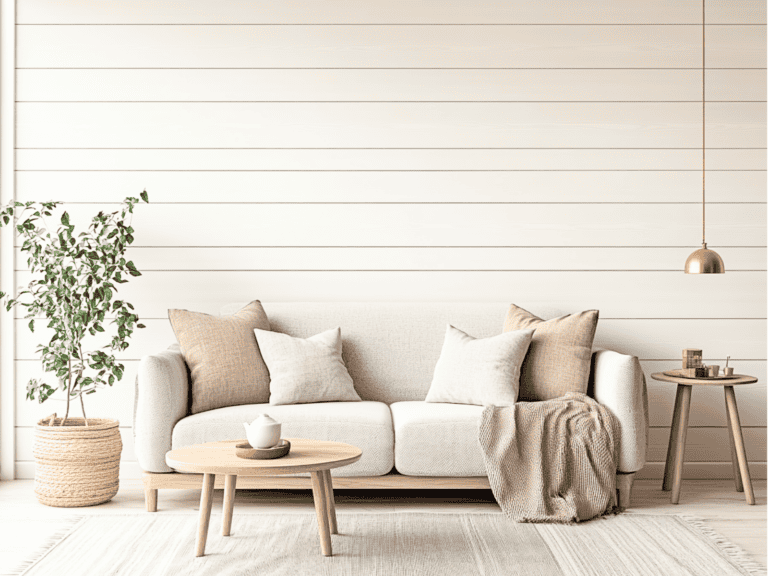The 30-Day Declutter Challenge: From Overwhelmed to Organized
Feeling Overwhelmed?
Is clutter taking over your home, leaving you feeling stressed and suffocated? You’re not alone. Many of us struggle with the piles of stuff that seem to multiply overnight. But imagine a home where everything has a place, where you can have peace and serenity. That dream can become a reality with this 30-Day Declutter Challenge.
What to Expect:
- Manageable Tasks: Small, daily decluttering steps that fit into your busy schedule.
- No Overwhelm: Forget marathon cleaning sessions. This challenge is about progress, not perfection.
- Lasting Results: In just one month, you’ll transform your home into a haven of peace and order.

Why Declutter? The Life-Changing Benefits of an Organized Home
Clutter isn’t just about a messy house; it’s a hidden threat to your well-being, productivity, and joy. Let me illustrate with a personal story:
I once faced a frustrating paintbrush predicament. As a landlord constantly repainting rental properties, I could never find a brush when I needed it. Why? My garage was a disaster zone – paint cans teetering, tools scattered, brushes hidden in every corner.
One weekend, I tackled the chaos head-on. The result? I found enough paintbrushes to equip an entire neighborhood! This clutter wasn’t just unsightly; it was actively hindering my work and creating unnecessary stress.
But after decluttering, my garage transformed. Tools had homes, paint was organized, and brushes lived in a labeled bin. I could finally breathe, find what I needed instantly, and my stress melted away.
This experience taught me that clutter isn’t just visual noise – it’s a real burden. Decluttering can bring you:
Stress Reduction and a Happier You
- Visual Stress: Clutter bombards your senses, causing low-level anxiety that can build up over time. Clearing away the excess visual stimuli can lead to a calmer, more peaceful mind.
- Scientifically Proven: Studies have linked clutter to higher levels of cortisol, the stress hormone. By decluttering, you’re essentially creating a more serene environment that can lower your stress levels and improve your mood.
- Better Sleep: A cluttered bedroom can disrupt sleep patterns. A clean, organized space can promote better rest and rejuvenation.
Increased Productivity and Focus
- Clear Mind, Clear Goals: Clutter is a distraction. When your surroundings are organized, your mind is free to focus on what truly matters. This leads to better concentration, improved decision-making, and increased creativity.
- Real Results: Many people report feeling more motivated and energized after decluttering. Whether it’s your workspace or your home, an organized environment can help you achieve your goals more effectively.
Time and Space: Yours to Enjoy
- Find Things Faster: No more frantic searches for lost items! Decluttering means everything has its place, saving you precious time and frustration.
- Less Cleaning, More Living: A streamlined home is easier to clean and maintain. Spend less time tidying and more time doing what you love.
- Welcome Home: A clutter-free space is inviting and restful. Imagine walking into your home and feeling a sense of calm and contentment wash over you.

Preparing for Your Declutter Transformation
Before diving into the daily tasks, let’s set ourselves up for success with a few essential preparations:
Mental Preparation: Your Mindset Matters
Decluttering is as much a mental exercise as it is a physical one. Approach the challenge with a positive attitude and embrace the process as a journey of self-discovery.
- Cultivate a Positive Mindset: View decluttering as an act of self-care, a way to create a home that nurtures and supports you.
- Set Realistic Expectations: Don’t aim for perfection. Focus on progress, not an idealized outcome.
- Celebrate Small Wins: Each item you declutter is a victory. Acknowledge your accomplishments and keep the momentum going.
- Mindful Decluttering: Before discarding an item, take a moment to appreciate its role in your life. Express gratitude for the joy or use it once provided, then let it go with a clear conscience.
- Avoid Common Mistakes: While enthusiasm is key, it’s also important to be aware of common decluttering pitfalls that hinder your progress. Take a moment to familiarize yourself with these mistakes to ensure success. Also, ensure you’re aware of the sneaky things contributing to a cluttered look. Check out our “43 Things That Make Your House Look Cluttered” post for a comprehensive list.
Gather Your Decluttering Toolkit
Having the right tools will make the decluttering process smoother and more efficient. Here’s what you’ll need:
- Boxes or Bins: These are used for sorting items into categories like “donate,” “sell,” or “relocate.”
- Trash Bags: For items that are no longer usable.
- Labels: To mark your boxes and bins.
- Cleaning Supplies: To wipe down surfaces as you declutter.
- Donation Resources: Research local charities or organizations that accept donations.
Pro Tip: Consider investing in a label maker or clear storage bins to make organization easier.
Create Your Declutter Game Plan
A schedule is your roadmap to success. It will help you stay on track and avoid feeling overwhelmed.
- Printable Calendar or Tracker: Download the calendar below or create one to visualize your progress and mark off completed tasks.
- Daily Time Commitment: Set aside a specific amount of time each day for decluttering (even 15-20 minutes can make a difference).
- Start Small: Begin with manageable tasks, like decluttering a single drawer or countertop. This will build your confidence and create a sense of accomplishment.
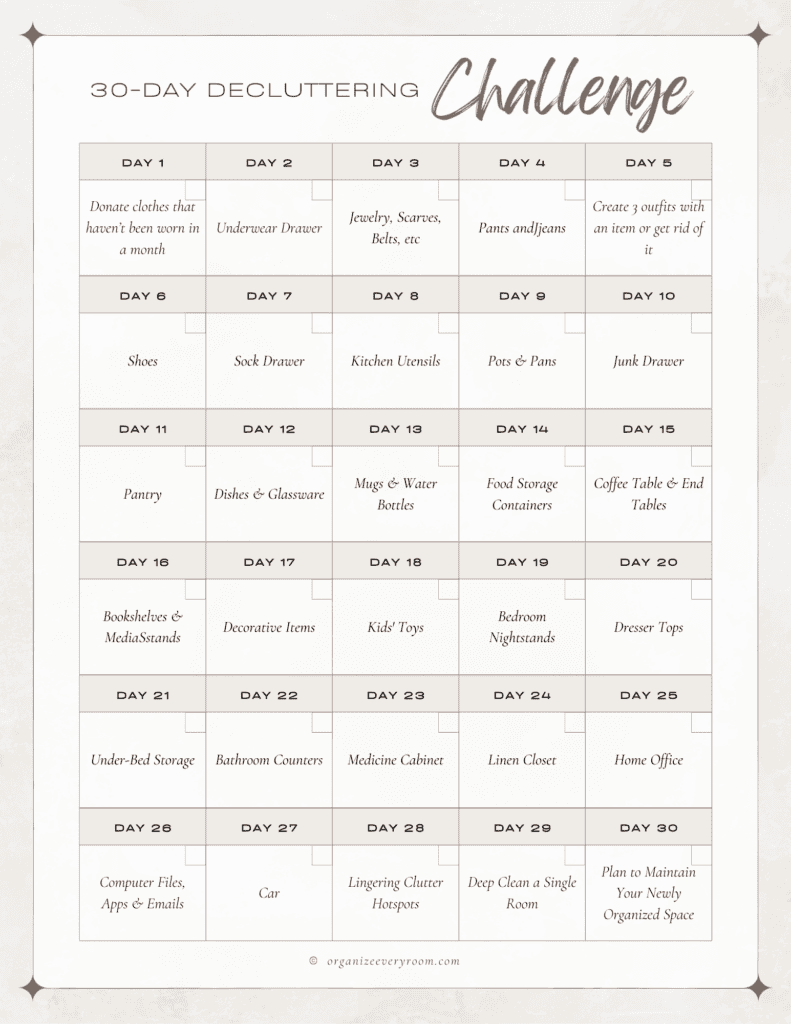
The 30-Day Declutter Challenge: Your Day-by-Day Roadmap to a Clutter-Free Haven
This challenge is designed to break down decluttering into manageable, bite-sized tasks. We’ll focus on different areas of your home each week, providing specific daily instructions to guide you. Remember, take before-and-after photos to document your progress and celebrate your wins!
Week 1: Clothes and Closets
- Day 1: The “Reverse Hanger” Trick: Turn all your hangers backward. After wearing an item, hang it back up the right way. After a month, donate any items still on backward hangers.
- Day 2: Move on to your underwear drawer. Discard anything worn out or uncomfortable.
- Day 3: Evaluate your jewelry, scarves, belts, etc. Discard anything broken, outdated, or unworn.
- Day 4: Declutter pants and jeans. Donate those that don’t fit or flatter your figure.
- Day 5: Create outfits from your existing clothes. If an item cannot be used to create at least three outfits, consider letting it go.
- Day 6: Tackle shoes. Donate pairs you haven’t worn in a year or don’t feel good in.
- Day 7: Clean out the sock drawer. Toss mismatched or holey socks and donate those you no longer wear.
Week 2: Kitchen and Pantry
- Day 8: Declutter your kitchen utensils. Discard duplicates, broken items, or anything you rarely use.
- Day 9: Move on to pots and pans. Keep only the ones that you use.
- Day 10: Tackle the “junk drawer.” Toss old receipts, expired coupons, and broken pens.
- Day 11: Clean out your pantry. Discard expired food, donate unopened items you won’t use, and organize the remaining items.
- Day 12: Sort through dishes and glassware. Keep only what you need and love, and donate the rest.
- Day 13: Declutter mugs and water bottles. Limit yourself to a reasonable number per person in your household.
- Day 14: Organize your food storage containers. Match lids to containers and get rid of any mismatched or damaged ones.
Week 3: Living Areas and Bedrooms
- Day 15: Start with your coffee table or end tables. Remove anything that doesn’t belong and give the surfaces a good cleaning.
- Day 16: Declutter bookshelves and media stands. Donate books you won’t read again or movies you don’t watch.
- Day 17: Tackle decorative items. Keep only what you truly love and what adds value to your space.
- Day 18: Declutter kids’ toys (if applicable). Involve them in the process and donate unused or outgrown toys.
- Day 19: Move on to the bedroom nightstands. Clear off anything you don’t need for your bedtime routine.
- Day 20: Declutter your dresser tops. Return items to their proper places and clear away unnecessary clutter.
- Day 21: Focus on under-bed storage. Remove everything, assess its usefulness, and discard or donate anything you don’t need.
Week 4: Bathroom, Office, and Miscellaneous
- Day 22: Clear your bathroom counters. Keep only essentials within easy reach.
- Day 23: Declutter your medicine cabinet. Discard expired medications and products you no longer use.
- Day 24: Organize your linen closet. Donate or repurpose old towels and sheets.
- Day 25: Tackle your home office (if applicable). Organize paperwork, declutter desk drawers, and create a functional workspace.
- Day 26: Declutter your digital life. Organize computer files, unsubscribe from unwanted emails, and delete unused apps.
- Day 27: Focus on your car. Remove trash and unnecessary items, and give it a quick clean.
- Day 28: Catch-all day. Tackle any lingering clutter hotspots you’ve missed or revisit areas that need extra attention.
- Day 29: Deep clean a single room. Now that you’ve decluttered give one room a thorough cleaning to celebrate your progress.
- Day 30: Reflect and plan. Celebrate your accomplishments, reflect on your decluttering journey, and create a plan to maintain your newly organized space.
Remember, decluttering is a journey, not a race. Take it one day at a time and celebrate your progress along the way!
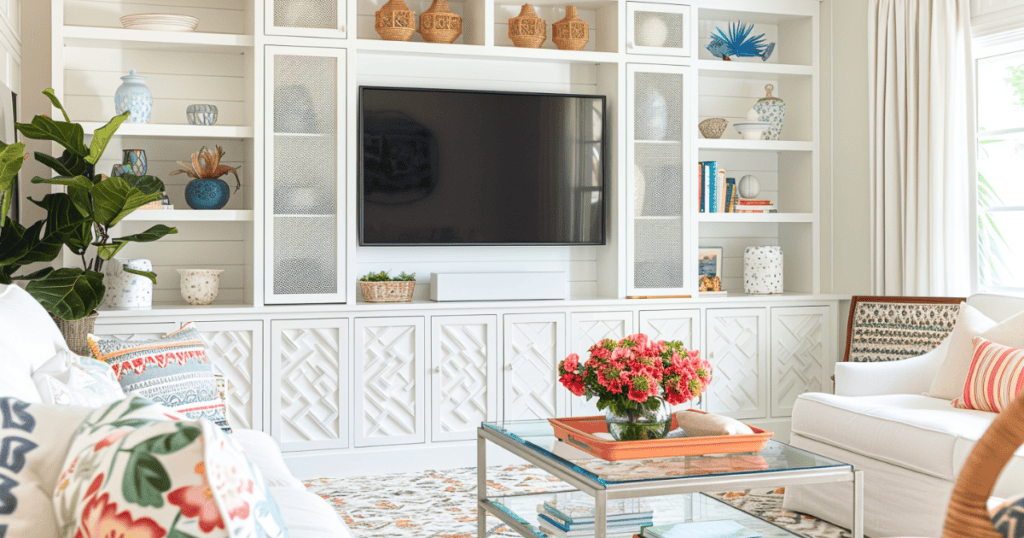
Gamify Your Declutter: Make It Fun & Stay Motivated
Decluttering doesn’t have to be a chore. Add some fun and excitement to your challenge with these gamification ideas:
Declutter Bingo
- Create Your Card: Make a bingo card with different decluttering tasks in each square (e.g., declutter the junk drawer, donate five items of clothing, clear off the kitchen table).
- Play and Win: As you complete each task, mark off the corresponding square. Aim to get a “bingo” by completing a row, column, or the entire card.
- Rewards: Set up rewards for yourself as you achieve bingo milestones. These could be small treats like a coffee date, a new book, or a relaxing bath.
30-Day Photo Challenge
- Document Your Progress: Take a photo of each item or area you declutter each day. This visual record will showcase your progress and keep you motivated.
- Share Your Journey: Post your photos on social media with a #declutterchallenge hashtag to connect with others who are also decluttering.
- Creative Inspiration: Use your photos to create a before-and-after collage or slideshow at the end of the challenge.
Friend or Family Challenge
- Accountability Partner: Team up with a friend, family member, or roommate to declutter together. Set goals, share progress, and celebrate each other’s wins.
- Shared Motivation: Having a decluttering buddy can help you stay motivated and accountable. You can share tips, offer encouragement, and make the process more enjoyable.
- Friendly Competition: Create a friendly competition to see who can declutter the most or complete the challenge first.
Incorporating these fun elements into your declutter challenge will make you more likely to stick with it and achieve your clutter-free goals. Decluttering is a journey, and it’s okay to have some fun along the way!
Overcoming Declutter Challenges: Your Guide to Staying on Track
Even with the best intentions, decluttering can present some hurdles. But don’t worry, these challenges are surmountable with the right strategies.
Dealing with Decluttering Roadblocks
- Procrastination: Break tasks into smaller, more manageable chunks. Set a timer for 15 minutes and focus on one specific area. The momentum will often carry you forward.
- Decision Fatigue: Don’t overthink it. When deciding whether to keep an item, ask yourself these three simple questions: Do I use it? Do I love it? Does it add value to my life? If the answer is no to all three, let it go.
- Emotional Attachment: It’s natural to feel attached to certain items, even if they no longer serve a purpose. To preserve the memory, try taking a photo of the item before donating or discarding it. If an item holds sentimental value, consider displaying it or creating a dedicated memory box.
Tip: Reward yourself for your progress! Set small goals and celebrate each milestone with a treat, activity, or a simple pat on the back.
Involving Family or Roommates
Decluttering is more effective (and fun!) when everyone participates. Here’s how to get your household on board:
- Communicate: Explain the benefits of decluttering and how it will improve everyone’s lives.
- Set Shared Goals: Decide what you want to achieve with your decluttering efforts.
- Divide and Conquer: Assign specific tasks or areas to each person based on their interests and abilities.
- Make it Fun: Put on some music, turn it into a game, or offer rewards for a job well done.
- Lead by Example: Show enthusiasm and be the first to tackle a decluttering task. Your positive attitude can be contagious.
Remember, decluttering is a team effort. By working together, you can create an organized and peaceful home.
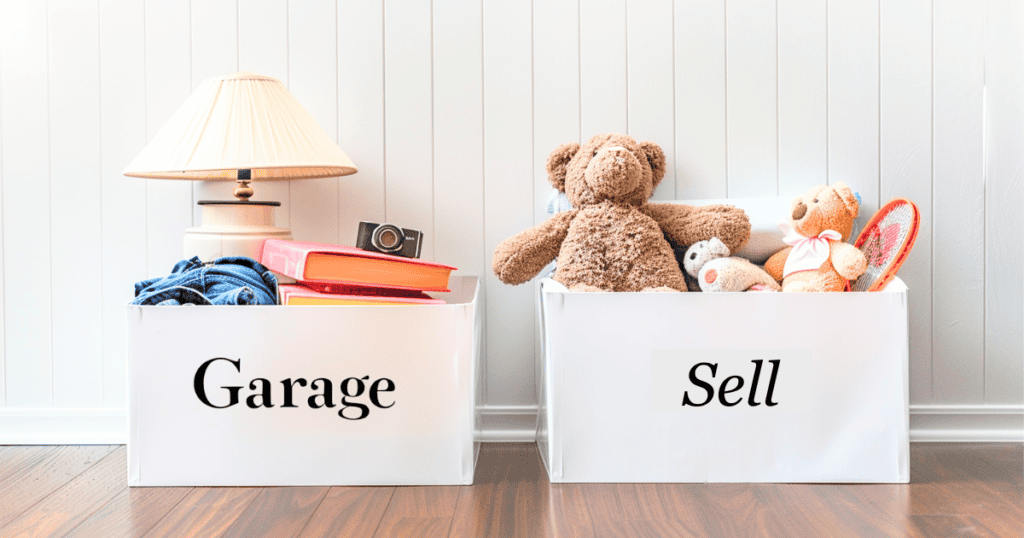
Maintaining Your Clutter-Free Haven: Long-Term Strategies
Congratulations! You’ve completed your 30-day declutter challenge. Now, the key is to make these changes last. Here are a few strategies to keep your home organized and clutter-free for the long haul:
The Golden Rule: One In, One Out
Remove one item from your home for every new one you bring in. This simple rule helps prevent clutter from creeping back in.
- How it Works: Before making a new purchase, ask yourself, “What am I willing to let go of to make space for this?” This encourages mindful consumption and prevents unnecessary accumulation.
- Benefits: It keeps your belongings in check, ensures your space doesn’t become overcrowded, and promotes a more conscious approach to shopping.
Make Decluttering a Habit
Just like brushing your teeth or washing your face, decluttering should become a routine.
- Little and Often: Schedule short decluttering sessions (15-20 minutes) several times a week. This prevents clutter from piling up and makes the task less daunting.
- Quick Wins: Focus on small areas, like your purse, a junk drawer, or a countertop. Even a few minutes of decluttering can make a noticeable difference.
Mindful Consumption: Quality Over Quantity
Before making a purchase, pause and ask yourself these questions:
- Do I need this? Is it a necessity or a want?
- Will I use it regularly? Will this item add value to my life in the long term?
- Do I love it? Does it spark joy or serve a practical purpose?
By being more intentional about your purchases, you’ll naturally accumulate less clutter. Consider investing in fewer, higher-quality items that you truly love and will use for years to come.
Decluttering for a Cause: Give Your Unwanted Items a New Life
Your decluttered items don’t have to end up in a landfill. Instead, consider donating them to those in need or selling them to earn some extra cash.
Finding the Right Donation Center
- Research: Look for local charities that align with your values and accept the types of items you’re donating.
- Prepare Your Donations: Clean items thoroughly and ensure they’re in good condition.
- Tax Deduction: Don’t forget to ask for a donation receipt for potential tax benefits.
Selling Your Unwanted Items
Turn your clutter into cash! There are several ways to sell your unwanted items:
- Garage Sale: A classic option for selling a variety of items.
- Online Marketplaces: Platforms like Facebook Marketplace, Craigslist, or eBay offer a wider reach for potential buyers.
- Consignment Stores: If you have high-quality items, consider consigning them to a store that specializes in reselling gently used goods.
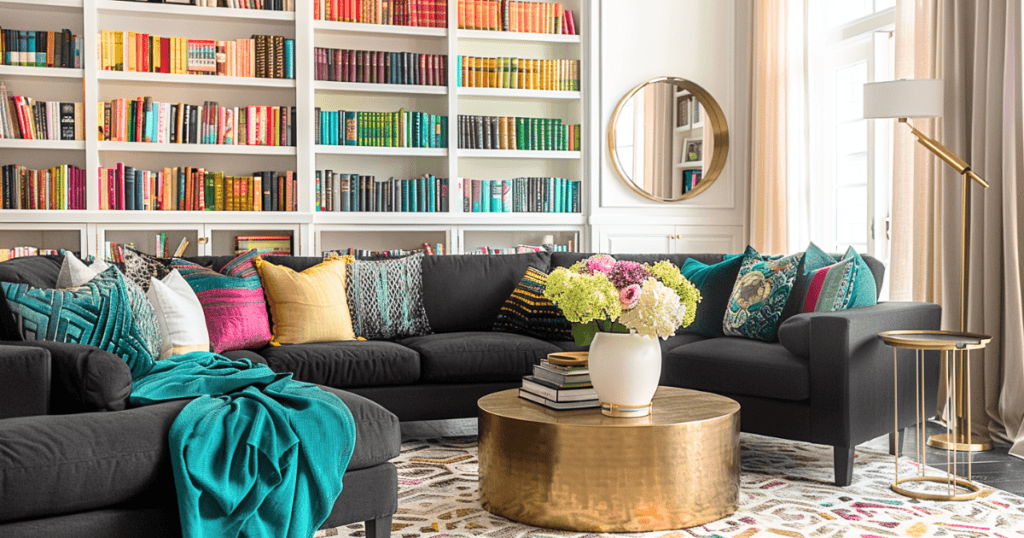
Frequently Asked Questions: Your Declutter Doubts, Cleared
What if I get overwhelmed and anxious during this month-long declutter challenge?
Take a deep breath and remember that progress – not perfection – is the goal. Break tasks into smaller chunks, focus on one area at a time and celebrate every small victory. Decluttering is a journey towards creating a calmer, more serene sanctuary for yourself.
What should I do with items I no longer want or need?
Donating, selling, or recycling are all great options for giving your unwanted items a new life. Avoid throwing things away unnecessarily, and consider donating to charities or organizations that resonate with you.
How can I get my family or roommates involved in the decluttering process?
Make it fun! Turn decluttering into a game or challenge, assign tasks based on everyone’s interests, and celebrate your collective progress. A collaborative approach can create a sense of shared accomplishment and build positive energy in your home.
What if I don’t complete the challenge within 30 days?
Don’t worry! This challenge is a guide, not a strict rulebook. Take it at your own pace, focus on creating sustainable habits, and remember that even small steps can lead to a more peaceful and organized home.
How should I approach sentimental items that I’m struggling to let go of?
Sentimental clutter can be the most challenging to address. Take your time, be gentle with yourself, and remember that memories are not tied to physical objects. Consider taking photos of items before letting them go, or creating a dedicated memory box for a few cherished items.
Can I try specific decluttering methods for different parts of my home or lifestyle?
Absolutely! Explore different decluttering philosophies, such as the KonMari Method, Minimalism, or a Capsule Wardrobe Challenge, to find an approach that resonates with you and suits your unique needs. Each decluttering method offers valuable insights and strategies to help you achieve your decluttering goals.
How can I prevent clutter from building up again?
Conclusion
Release the Anxiety and Welcome a More Peaceful You.
Congratulations! By completing this 30-day declutter challenge, you’ve taken a significant step towards a calmer, more organized life. As you’ve experienced firsthand, decluttering isn’t just about tidying up – it’s about creating a home that truly supports your well-being.
You’ve reduced stress, opened your space, and reclaimed your time. You’ve likely discovered a renewed sense of focus and energy. But most importantly, you’ve cultivated a new appreciation for what matters.
Remember, this is just the beginning. The journey to a clutter-free life is ongoing, and there will always be new challenges to overcome. But with the tools and strategies you’ve learned, you’re well-equipped to maintain your newfound sense of calm and peace.
Don’t stop here! Continue to explore new decluttering techniques, refine your organizational systems, and embrace a more mindful approach to consumption. And most importantly, don’t be afraid to celebrate your wins.
We invite you to share your decluttering successes, challenges, and organizational tips with our community. Your story can inspire others to embark on decluttering journeys and create homes that spark joy and tranquility.


